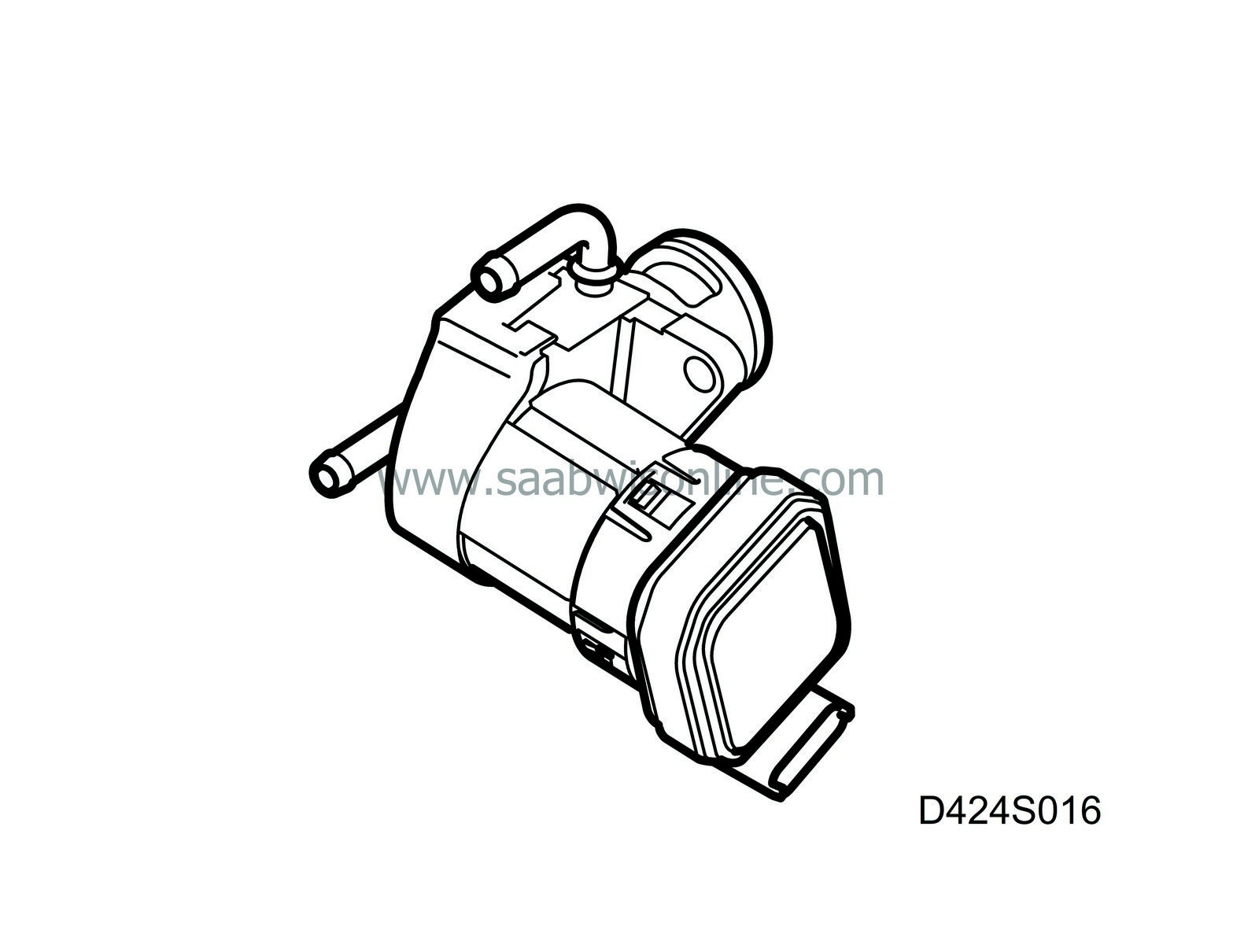Exhaust Gas Recirculation (EGR)
| Exhaust Gas Recirculation (EGR) |
With an EGR system (Exhaust Gas Recirculation), a controlled amount of exhaust emissions are directed to the induction side where they are mixed with the induction air. The result is slower combustion at a lower temperature and maximum pressure, which in turn reduces the formation of NO x .
The EGR valve is electronically controlled and has its own processor. The EGR valve is controlled by a PWM signal at 140 Hz from PSG 16.
The processor in the EGR valve keeps track of how far open the valve is. This means that when the PSG 16 signals how much to open or close the valve, the reaction time is very short. The combustion temperature can therefore be kept low, which effectively reduces NOx emissions. The EGR function is deactivated after one minute of idling to reduce the build-up of carbon deposits.
The processor in the EGR valve also means that the valve is self-diagnosing. If, for example, the valve sticks, the engine control module is informed by a 100 Hz PWM signal, and a DTC is generated. If a DTC for the EGR valve has been generated, engine torque will be reduced and the EGR and swirl functions deactivated. In addition, the CHECK ENGINE lamp will light.



